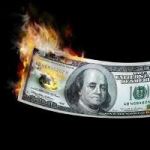
The task for DOGE was simple enough. Musk would apply the disruptive magic of Silicon Valley to the grim halls of Washington. He’d shutter all the useless agencies that specialize in pointless minutia and archaic laws and regulations. He’d eliminate waste and make the government more efficient. Why not?
All in all, from our observations and experiences, ambition and reality generally do not line up. What little boy doesn’t dream of being an astronaut or a starting pitcher for the Los Angeles Dodgers when he grows up? How many live this out?
Nonetheless, we believe the best personal and professional endeavors are those that are nearly impossible to attain. There are others, however, that are absolutely futile. Sending people to Mars, for example, is on the spectrum of nearly impossible. Making the federal government efficient is absolutely futile. Continue reading







